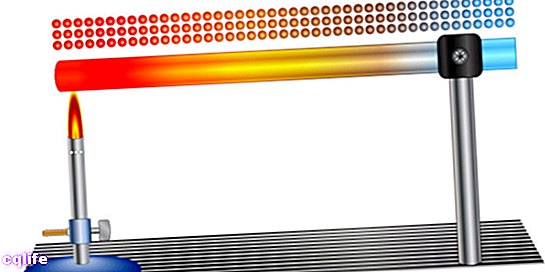- What is thermal equilibrium?
- What is thermal equilibrium?
- Thermal equilibrium formula
- Zero law of thermodynamics
- Examples of thermal equilibrium
We explain what thermal equilibrium is, what it consists of and what its formula is. Also, the zero law of thermodynamics and examples.

What is thermal equilibrium?
Inphysical, Thermal equilibrium is called the state in which two bodies in contact, or separated by a conducting surface, equalize their initially disparate temperatures, due to the transfer of heat from one to the other.
If we have two objects in contact, one hotter than the other, as time passes both will tend to reach the same temperature and, if there is no transfer of heat towards other objects, henceforth they will maintain a thermal equilibrium, that is, a temperature constant.
What is thermal equilibrium?

This phenomenon can be explained microscopically, understanding that the temperature of objects is directly related to the Kinetic energy average of yourparticles, beatoms, molecules, or those that should be considered. This average is what is commonly called "internal energy" in physics, so the higher the kinetic energy, the higher the internal energy and the higher the temperature of the system.
Two bodies in contact exchange energy as time passes. And thus, the thermal equilibrium point is reached when the kinetic energy of both bodies is equal, so that both bodies start to operate as a single thermodynamic system, endowed with the same amount of internal energy and, therefore, temperature.
Thermal equilibrium formula
The expression of thermal equilibrium involves the calculation of the temperature difference between the two bodies, so the amount of heat (Q) that they exchange must be determined.
This is determined using the formula Q = m. Ce. Δt, where m will be themass of the body, Ce suspecific heat expressed in cal / gr ° C, and Δt is the temperature variation, that is: Δt = tf - ti, final time minus initial time.
Once the heat Q for each body has been calculated, we can compare them knowing that the thermal equilibrium occurs in the equality of the temperatures between body 1 and body 2. To reach thermal equilibrium, the heat that the coldest body gains It is the one that the hottest body loses, so Q1 = Q2, that is, heat gained = heat lost.
Zero law of thermodynamics

This principle is expressed in the so-called Zero Law of Thermodynamics, which was expressed in 1931 by R. H. Fowler as follows: “If two systems A and B are found, each one separately, in thermal equilibrium with a third system, which we will call C, then A and B are also in thermal equilibrium with each other ”.
That is: if A = C and B = C, then A = B.
Thanks to this principle, centered on the mathematical formulation of thermodynamics, it is known what Maxwell expressed in words in this way: "All heat is of the same type."
Examples of thermal equilibrium
Here are some simple examples of thermal equilibrium:
- When we enter a warm room, we perceive the warmth of theair immediately but given a margin ofweather, our body will exchange heat with the air and will enter into thermal equilibrium with it, so we will stop perceiving the difference in temperature.
- If we introduce a glass container with cold water into a larger one with boiling water, the heat flow between the two will cool the hot water and heat the cold one, until reaching an intermediate level of thermal equilibrium.
- The products that we have in our kitchen freezer are in thermal equilibrium with respect to the frozen air between them, so that they all share the same temperature.
